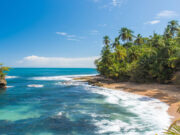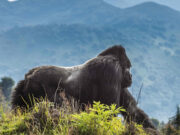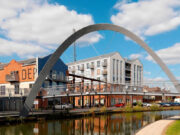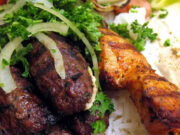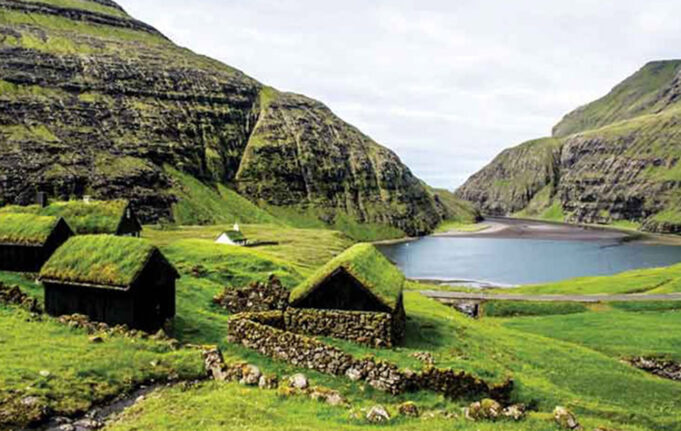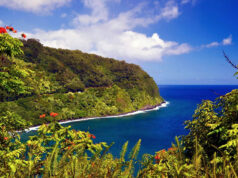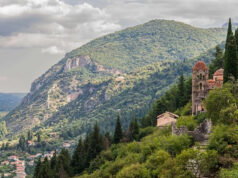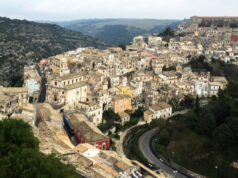Andy Jarosz discovers dramatic scenery, abundant birdlife and a welcoming community in the remote Faroe Islands
Have you heard the one about the Prime Minister, the clergyman and the policeman chasing a runaway sheep? A ridiculous story in most parts of the world, but an everyday tale on the Faroe Islands, where everyone plays their part in helping a small but determined population survive in this remote North Atlantic outpost.
The Faroe Islands are made up of 18 islands and lie around 200 miles north of Scotland. The population of 45,000 has its own Faroese language, although the islands fall under Danish control. It’s a driver’s delight to negotiate the islands’ quiet roads, with spectacular views of the landscape broken only by the tunnels which cut through the mountains or pass under the sea as a link to the main centres of population.
The Faroese people retain a fiercely independent nature and the islands’ isolation has played a major part in forming its unique culture. I meet Joannes Patursson, the 17th generation of his family to occupy the wooden farmhouse at Kirkjubøur, near the capital of Torshavn. Kirkjubøur traces its origins back to the 11th century, when the island’s bishops built a spiritual centre on the site; the 14th-century ruin of Magnus Cathedral still stands beside the farmhouse. “You could say this is the world’s oldest log cabin,” Joannes tells me as we chat in his living room, surrounded by family heirlooms and portraits of his ancestors. He describes how the sense of community among the Faroese remains very strong by necessity, with neighbours, family and friends helping out in the farming and fishing efforts and food shared out among the whole community. As Joannes explains, “When a farmer needs extra help, you go, no matter what your status is, whether you’re a policeman, a doctor or even the Prime Minister.”
In summer, the Faroe Islands are home to millions of sea birds and are a popular place to see everyone’s favourite, the puffin. I take the eight-minute helicopter ride from the airport to Mykines, a largely barren island bordered by tall cliffs with only the hamlet by the harbour a clue to any sign of human influence. Michael Davidsen, a retired fisherman, leads me up the steep path towards the puffin grounds. As we walk, he tells me about the gradual demise of the population on Mykines, which peaked at around 170 in 1940 but has now dropped to just nine permanent residents living in five of the village’s 40 houses. Most are elderly and when I ask about the community’s future in 20 years’ time, Michael shakes his head. “Maybe it won’t last for ten more years.”
The human population may be dwindling but the birds occupy Mykines in great numbers. It’s over an hour’s walk to the old lighthouse at the western end of the island and we stop along the way to watch as hundreds of puffins flap their wings frantically in low passes above our path, landing clumsily into the wind along the cliff edge. Kittiwakes perch on narrow ledges above the swell, guarding their nests and a few tiny heads occasionally pop out from below their mothers to squawk into the sea air.
Although Torshavn is the capital of the Faroe Islands, it barely ranks as a small town, with a population of just 20,000 people. I explore the town with local guide Unn á Lað, who points out the modest parliament building and the Danish representative’s house. As we pass the Prime Minister’s house, I’m delighted to realise that I could ring on his doorbell if I wanted to and Unn tells me that he’s often seen walking around the town.
The jewel of Torshavn is Tinganes, the site of the original parliament in Viking times and now a charming collection of tightly-packed wooden houses on a small peninsula jutting out into the harbour. I ask Unn about the grass roofs which are commonplace here and across the islands. “They’re much easier to maintain and can last for 50 years. All you need to do is cut the grass once a year.” And as Unn explains, sometimes even that is an easy task. “In some villages they just put a sheep on the roof and let it graze.”
famous knitwear
Stopping at the Gudrun & Gudrun design shop, I meet one of the shop’s founders, Gudrun Rogundottir. Gudrun tells me about her women’s empowerment campaigns which involves many of her products being made by women in Peru and Jordan. Her most iconic design was seen by international TV audiences in the Danish detective series, The Killing, worn by the heroine, Sarah Lund. “I was displaying a collection in Copenhagen when someone came and told me that one of my sweaters was exactly what they were looking for,” she says. A while later, she saw the garment feature in the hit TV show and since then she has had requests from all over the world.
Rowing is an important part of Faroese tradition and at Runavik on the island of Eysturoy, I catch an afternoon of races taking place in the fjord, joining a lively crowd of onlookers who are cheering on the rowers. A local man takes a break from the action to explain the events to me. These are regional heats and the teams are slugging it out to compete in the big annual races that take place in Torshavn every July. I ask what the winners receive. “There’s no big prize,” he tells me. “Just the glory of winning for your village.” This is typical of the Faroe Islands, where everywhere I go, I am struck by the strong sense of community, of people working together to survive in this remote and challenging environment, their warmth in direct contrast to the wild and often dramatic landscapes.
WAY TO GO
Sunvil offers tailor-made holidays in the Faroe Islands; from £1,091 for a week, including flights,car hire and accommodation (Tel: 020 8758 4772 / sunvil.co.uk).
Regent Holidays has an eight-day group tour, including the island of Streymoy, Eysturoy and Torshavn, from £1,995 (Tel: 020 7666 1290 / regent-holidays.co.uk)
Taber Holidays is offering a four-night tour to the Faroes on March 17, 2015 to view and celebrate the total solar eclipse, the last such event visible in Europe until 2026. From £1,299pp including flights taxes, transfers and accommodation (Tel: 01274 875 199 / www.taberhols.co.uk).



